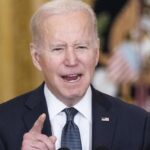The committee said Mr. Mastriano spoke directly “with former President Trump about your postelection activities.” Mr. Mastriano, a former Army officer, was also on the Capitol grounds on Jan. 6, though he later explained in a statement that “he followed the directions of the Capitol Police and respected all police lines” that day.
The subpoenas instruct the witnesses to produce documents and sit for depositions in March.
“The select committee is seeking information about efforts to send false slates of electors to Washington and change the outcome of the 2020 election,” said Representative Bennie Thompson, Democrat of Mississippi and the chairman of the committee, adding: “The select committee has heard from more than 550 witnesses, and we expect these six individuals to cooperate as well as we work to tell the American people the full story about the violence of Jan. 6 and its causes.”
The scheme to employ the so-called alternate electors was one of Mr. Trump’s most expansive efforts to overturn the election, beginning even before some states had finished counting ballots and culminating in the pressure placed on Mr. Pence to throw out legitimate votes for Mr. Biden when he presided over the joint congressional session to finalize the election outcome.
At various times, the gambit involved lawyers, state lawmakers and top White House aides.
The New York Times reported this month on legal memos that show some of the earliest known origins of what became the rationale for the use of alternate electors.
Key Developments in the Jan. 6 Investigation
The memos — from a lawyer named Kenneth Chesebro to James R. Troupis, a lawyer for the Trump campaign in Wisconsin — show how, just over two weeks after Election Day, Mr. Trump’s campaign was seeking to buy itself more time to undo the results. At the heart of the strategy was the idea that their real deadline was not Dec. 14, when official electors would be chosen to reflect the outcome in each state, but Jan. 6, when Congress would meet to certify the results.
The two memos were used by Mr. Trump’s top lawyer, Rudolph W. Giuliani, and others like John Eastman as they developed a strategy intended to exploit ambiguities in the Electoral Count Act, according to a person familiar with the matter.
The subpoenas are the latest step the committee has taken to investigate the plans to use electors who falsely attested Mr. Trump had won their states.




